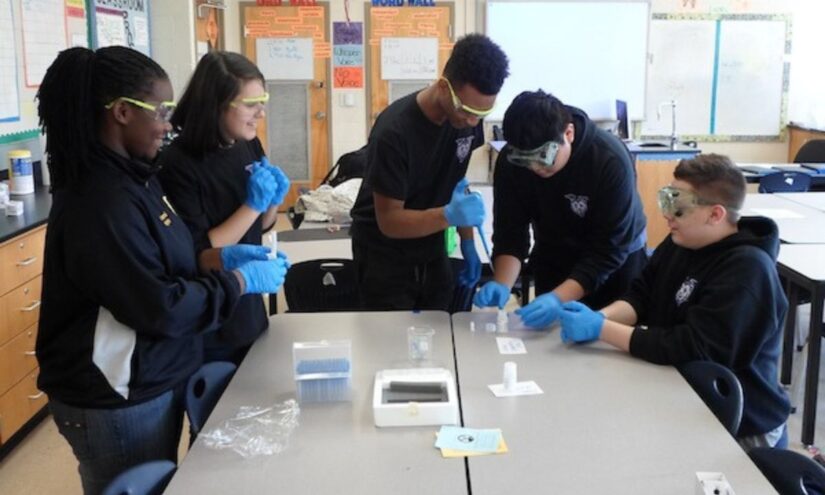During this summer, a team of students from MIT embarked on a journey to the sou …
3 Crucial Skills That Science Teaches Students for Learning and Life
Jennifer Livingstone

Amid the ongoing recovery from the pandemic, educators are tasked with hastening the learning process in schools. Yet, there is a lack of concrete strategies in place to facilitate this acceleration, leaving many to ponder where aiding students in cultivating a sense of self-assurance and proficiency fits into the equation.
Acting as a guide to science educators and serving as a representative for a national social-emotional learning initiative that enlightens students about the significance of relationships in the realms of learning and self-discovery, I emphasize to teachers that the sole pathway towards acceleration lies in student engagement. The catalyst for acceleration lies within the realm of student interest, which thrives on connections with teachers, peers, knowledge, the broader world, and themselves.
This undertaking involves following in the footsteps of learning science and the methodology of science itself by immersing students in the fundamental principles governing the natural world and the complexities encountered by professionals in unraveling them. This approach is applicable across all subjects, but it is particularly poignant in science education. Science imparts a diverse array of skills to students, enabling them to hone their abilities in communication, substantiating arguments with evidence, and utilizing data and numerical figures to authenticate and elucidate the phenomena they investigate.
Irrespective of their backgrounds, students have the potential for success if educators concentrate on fostering the same skill sets that propel accomplished scientists towards groundbreaking discoveries.
Primarily, through science, young individuals forge connections between themselves and the environment surrounding them. Particularly for those students who perceive the natural world as overwhelmingly vast, gaining mastery in content that transcends the confines of the classroom is imperative. Whether it’s delving into the radio frequencies transmitted by local stations or engaging with scientists of diverse backgrounds during hands-on experiments, students come to recognize that science isn’t relegated to a distant realm. Moreover, they develop an understanding that, akin to the visiting scientists, they too can influence their own surroundings.
Another substantive aspect involves exploring ongoing real-world research within their local community. Students exhibit heightened enthusiasm and intrigue when analyzing seismic wave data from a recent earthquake in close proximity, affording them the opportunity to interrogate local geologists about their endeavors. Such encounters render science profoundly meaningful. Furthermore, observing how scientists leverage empathy, conflict resolution, and listening skills while collaborating as a team underscores the value of social-emotional learning programs. These initiatives facilitate a deepened understanding among students through community-building activities like quick connection activities, where students collaborate in pairs. They learn to engage in novel interactions, appreciate diverse viewpoints, acknowledge each other’s contributions to team assignments, and navigate conflicts constructively when divergences arise.
More importantly, science equips students with the tools to think critically, innovate, and effect change on a global scale. Through honing scientific skills such as data analysis, evidence-based explanations, and problem-solving acumen, students are empowered to pursue their curiosity, share their insights confidently, and assume ownership of their educational pursuits.
Several years back, my eighth-grade students participated in the Student Spaceflight Experiments Program, a competitive endeavor sponsored by the National Center for Earth and Space Science Education. This nine-month challenge entailed crafting a research proposal for an experiment slated to be conducted aboard the International Space Station. Encouraging my students to select a topic that captivated their interest and held the potential for impact within the scientific community, one student drew inspiration from an article highlighting the prevalence of contaminated water in numerous nations. Consequently, the team devised a proposal outlining a water purification process for blue-green algae-contaminated water that could be tested in the microgravity environment of the space station. Subsequently, my students garnered national acclaim as a winner, propelling their experiment into space. Witnessing the experiment’s launch at the Kennedy Space Center bestowed upon us enduring memories.
Lastly, science provides enrichment avenues that facilitate students’ transition to the next phase of their academic expedition. These avenues prove especially instrumental when a substantial proportion of students have encountered adverse childhood experiences, necessitating strategies that endorse trauma-informed instruction and a secure learning milieu.
Several years later, working with a fresh cohort of students transitioning from elementary to middle school, I proposed to our principal a strategy aimed at best preparing the sixth-graders. This entailed orchestrating a two-week summer camp amalgamating social-emotional learning with academic instruction, intended to foster connections between students and school staff while nurturing relationships among peers. The curriculum centered on math, science, English Language Arts, and crucial facets of wellness encompassing self-awareness, self-management, social awareness, relationships, and responsible decision-making. Delivered by educators from the upcoming school the students would be joining, the experience underscored the value of community, positive interactions among peers and adults, while honing organizational skills, cultivating team dynamics, setting goals, nurturing perseverance, and managing deadlines to acclimate to the heightened academic demands of middle school.
These innovative methods not only kindle interest in STEM but also equip students to surmount challenging coursework across disciplines. Oftentimes, a considerable number of American students resort to hastily seeking solutions to intricate problems rather than engaging in the rigors of grappling with demanding tasks. This rings true not just academically but also in the broader spectrum of life. Middle school serves as an epoch where students are in the process of defining themselves. By fostering collaboration and fostering relationships with teachers and peers, students gain insight into themselves, their passions, and the art of self-regulation. It’s imperative for them to cultivate the aptitude to evaluate options, communicate effectively, and seek assistance when warranted—qualities that the science of learning deems indispensable in navigating life’s challenges within and beyond the educational realm.

